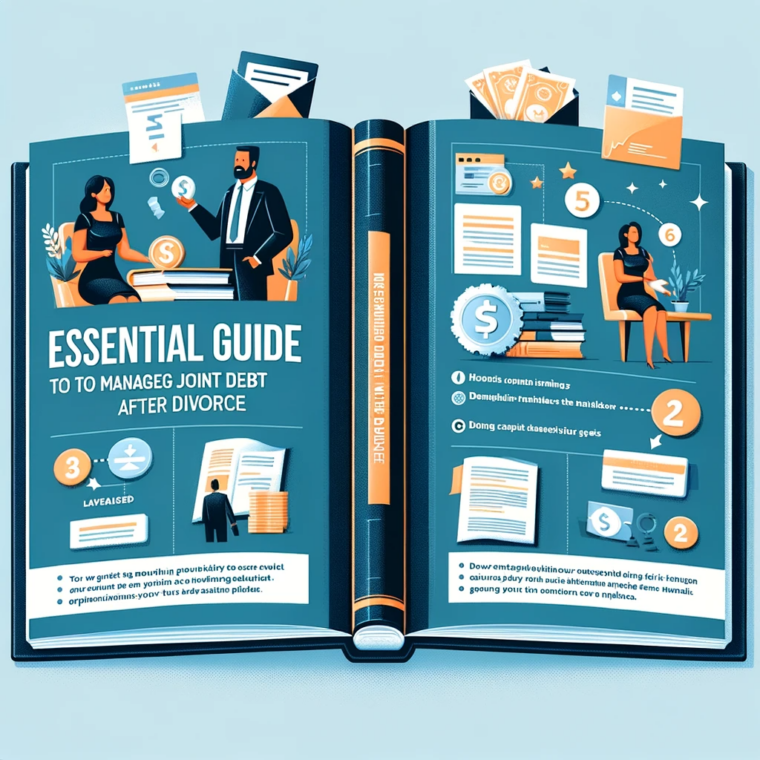When going through a divorce, it’s important to understand the legal and financial terms that come with the process. Knowing these terms can help you make informed decisions and communicate effectively with your attorneys.
That’s why we’ve created a user-friendly Divorce Glossary that covers common legal, financial, and emotional terms that you may encounter during your divorce. Our glossary can help you navigate the complexities of divorce and empower you to take control of your situation.
Whether you’re dealing with a contested divorce, child custody issues, or post-divorce modifications, our glossary provides clear and concise definitions that are easy to understand.
So, if you’re feeling overwhelmed by divorce terminology or simply want to better educate yourself, our Divorce Glossary is a great place to start.



Key Takeaways:
- Understanding divorce terminology is crucial for making informed decisions during the process.
- Our user-friendly Divorce Glossary covers common legal, financial, and emotional terms.
- The glossary can help you navigate the complexities of divorce and take control of your situation.
- Whether you’re dealing with child custody issues or post-divorce modifications, our glossary provides clear and concise definitions.
- Don’t feel overwhelmed by divorce terminology, educate yourself with our Divorce Glossary.
What is Divorce?
Divorce is the legal dissolution of a marriage. It is a complex legal process that can involve property division, child custody, and financial support agreements.
There are two main types of divorce – contested and uncontested. Contested divorce is when the two parties cannot agree on the terms of the divorce, and the court must intervene to resolve disputes. Uncontested divorce is when both parties agree on all terms and can file a joint petition for divorce.
In determining property division and child custody, the court will consider various factors such as the length of the marriage, the income and earning potential of each party, and the standard of living established during the marriage. It is essential to have expert legal representation during the divorce process to ensure that your rights are protected.
Legal Terminology in Divorce
Going through a divorce can be a complex process, especially when it comes to the legal terminology. In this section, we will define some of the most common legal terms used in divorce proceedings. Understanding these terms can help you communicate more effectively with your attorney, understand court documents, and make informed decisions about your divorce.
Alimony
Alimony, also known as spousal support, is a payment from one spouse to the other to provide financial support after divorce. This payment is usually made on a monthly basis for a specific duration of time determined by the court. Alimony can be either rehabilitative or permanent, depending on the circumstances of the divorce.
Equitable Distribution
Equitable distribution refers to the process of dividing marital property and debts between spouses. The court will consider factors such as the length of the marriage, contributions of each spouse to the marriage, and the earning potential of each spouse in determining a fair distribution of property.
Parenting Plan
A parenting plan is a document that outlines the custody and visitation arrangements for children of divorce. It includes details such as who the child will live with, visitation schedules, and decision-making responsibilities. Parenting plans must be approved by the court before they become legally binding.
Mediation
Mediation is a form of alternative dispute resolution where a neutral third party helps the couple reach a mutually agreed-upon settlement. This can help avoid the need for a trial and can save time and money. Mediation can be especially helpful when it comes to child custody issues.
Collaborative Divorce
Collaborative divorce is another form of alternative dispute resolution where both spouses work with their attorneys to reach a settlement outside of court. This process involves joint meetings, negotiations, and a commitment to finding a mutually beneficial resolution without going to trial.
By understanding these legal terms, you can make informed decisions throughout the divorce process and achieve a fair outcome.


Financial Terms in Divorce
Divorce can be an overwhelming time, especially when it comes to the financial aspects of the process. Understanding the following financial terms can help you make informed decisions and ensure a fair outcome for both parties.
Child Support
Child support is the financial payment made by one parent to the other to help cover the expenses of raising a child. These expenses may include food, clothing, and healthcare. The amount of child support is determined based on several factors, including the income of both parents and the child’s needs.
Spousal Support
Spousal support, also known as alimony, is the payment made by one spouse to the other to provide financial support during and after a divorce. This payment is typically made on a regular basis for a specified period, although it can also be a one-time payment.
Marital Assets
Marital assets are the assets that were acquired during the marriage and are subject to division during divorce proceedings. This may include the family home, vehicles, and shared bank accounts.
Separate Property
Separate property is property that was owned by one spouse prior to the marriage or was acquired through inheritance or gift during the marriage. This property is typically not subject to division during divorce proceedings.
Tax Implications
Divorce can have significant tax implications. It’s important to understand how divorce will impact your taxes, including any potential tax liabilities or benefits related to spousal support payments or the division of assets.
By understanding these financial terms, you can better navigate the divorce process and make informed decisions about your financial future. If you have any questions or concerns, it’s important to speak with a qualified attorney or financial advisor.


Child Custody and Support Terms
During a divorce, child custody and support terms can be confusing and complicated. Understanding the terminology is crucial for divorcing parents to make informed decisions about the welfare of their children. In this section, we’ll define and explain some common child custody and support terms.
Legal vs Physical Custody
Legal custody refers to the right to make important decisions regarding a child’s upbringing, such as education and medical treatment. Physical custody refers to where the child resides. Both legal and physical custody can be joint or sole, meaning both parents share these rights or only one parent has them.
Visitation Rights
Visitation rights refer to the time a non-custodial parent spends with their child. This can be supervised or unsupervised, and the schedule can be flexible or structured based on the needs of the child and the parents.
Parenting Time
Parenting time refers to the time a parent spends with their child, whether during visitation or while they are in their care. This term is often used instead of “custody” to emphasize the importance of both parents being involved in the child’s life.
Child Support Guidelines
Child support is a financial arrangement where one parent pays the other to help cover the cost of raising the child. Child support guidelines vary by state and take into account the income of both parents and the needs of the child.
Table: Child Support Guidelines
| Number of Children | Percentage of Non-Custodial Parent’s Income |
|---|---|
| 1 | 20% |
| 2 | 25% |
| 3 | 30% |
| 4 or more | at least 35% |
Note: These percentages are just a general guideline and can vary depending on each case’s specific circumstances.
Conclusion
Understanding child custody and support terms is essential for divorcing parents to make informed decisions about their child’s well-being. By familiarizing yourself with these terms, you’ll be better equipped to navigate the complexities of divorce and prioritize your child’s best interests.


Emotional and Psychological Support Terms
Divorce can be emotionally and psychologically challenging, and it’s important to prioritize self-care during this time. Understanding the following emotional and psychological support terms can be helpful in navigating the process:
- Therapy: This involves meeting with a trained mental health professional to discuss emotional and psychological issues related to divorce. Therapy can be individual or involve the entire family.
- Counseling: Similar to therapy, counseling can provide support and guidance during a divorce. Counseling can be more focused on specific goals such as communication or stress management.
- Co-parenting: This term refers to the process of working together with a former spouse to raise children. Co-parenting can include joint decision-making, shared custody, and a commitment to putting the children’s needs first.
- Coparenting classes: These classes can provide divorced parents with skills and knowledge to effectively co-parent their children. Classes may cover topics such as communication, conflict resolution, and child development.
It’s important to prioritize emotional and psychological support during and after a divorce. Seeking out these resources can help individuals and families to process their emotions and move forward in a healthy way.


Alternative Dispute Resolution Terms
Alternative dispute resolution (ADR) methods offer divorcing couples an opportunity to resolve conflicts outside of the courtroom. These methods can often be less stressful, less time-consuming, and less costly than traditional litigation. Here are some common ADR terms to know:
1. Mediation
Mediation involves a neutral third party, called a mediator, who facilitates communication between the divorcing spouses and helps them reach a mutually acceptable agreement. Mediation may involve both parties and their attorneys or just the parties alone.
2. Arbitration
Arbitration involves a neutral third party or panel, called an arbitrator, who listens to both sides and makes a decision about the dispute. The decision is usually binding and enforceable.
3. Collaborative Divorce
Collaborative divorce is a process where both parties and their attorneys work together to reach a settlement agreement without going to court. The process involves meetings, negotiations, and may involve other professionals, such as financial planners and mental health experts.
4. Early Neutral Evaluation (ENE)
Evaluative mediation, also known as Early Neutral Evaluation (ENE), involves a neutral third party who evaluates the case and provides the parties with a non-binding assessment of the case’s strengths and weaknesses. This assessment can help the parties reach a settlement or prepare for litigation.
5. Online Dispute Resolution (ODR)
Online dispute resolution (ODR) involves using technology, such as video conferencing or online platforms, to resolve disputes. ODR can be a useful tool, especially when distance or other factors make it difficult to attend in-person meetings.
By understanding these alternative dispute resolution terms, divorcing couples can make informed decisions about their legal options and choose the method that works best for them.


Post-Divorce Terms
After a divorce is finalized, there are still important terms to be aware of. Understanding these terms will help ensure that both parties comply with the terms of the divorce decree and that any modifications or enforcement actions are handled appropriately.
Modification
In some cases, circumstances may change after the divorce decree is finalized. For example, one party may experience a significant change in income or living situation. In these cases, it may be necessary to modify the original agreement. Modification may be used to adjust child support payments, custody arrangements, or other terms as needed.
Enforcement
Enforcement refers to the process of ensuring that both parties comply with the terms of the divorce decree. If one party fails to comply with the terms, the other party can seek enforcement through the court system. This may involve collecting unpaid child support, enforcing custody arrangements, or taking other actions to ensure compliance.
Decree
The divorce decree is the final court order that outlines the terms and conditions of the divorce. It is a legally binding document that both parties must comply with. The decree typically includes information on property division, child custody, child support, and any other relevant terms.
It is important to keep a copy of the divorce decree in a safe place, as it may be necessary to refer to it in the future. Both parties should make sure they understand the terms of the decree and comply with them fully.


In summary, post-divorce terms are essential to understand to ensure compliance with the divorce decree. Both parties should be aware of their rights and responsibilities and take appropriate action if necessary. By understanding these terms, individuals can move forward with confidence and make informed decisions about their future.
Commonly Misunderstood Terms
Divorce terminology can be confusing, but some terms are particularly challenging to grasp. In this section, we clarify and define commonly misunderstood terms that may arise during a divorce proceeding.
Annulment
Contrary to popular belief, an annulment is not the same as a divorce. While a divorce ends a legal marriage, an annulment declares that the marriage was never valid in the first place. To obtain an annulment, a party must prove that the marriage was either void or voidable.
Separate Maintenance
Separate maintenance is a legal separation that does not terminate the marriage. The court may grant separate maintenance in situations where the parties wish to live apart but not divorce, for religious or financial reasons, for example. In separate maintenance, the court may order child custody, visitation rights, and spousal support, but the parties remain married.
No-Fault Divorce
In a no-fault divorce, neither party is blamed for the failure of the marriage. This type of divorce is based on the grounds of irreconcilable differences, meaning that the marriage is irretrievably broken. No-fault divorce does not require either party to prove fault, misconduct, or wrongdoing on the part of the other spouse.


It is essential to understand the meaning of commonly misunderstood divorce terms to avoid legal complications and make informed decisions.
By gaining a clear comprehension of these confusing terms, individuals can better navigate the complexities of divorce and protect their rights. The use of our Divorce Glossary can significantly aid in understanding these and other terms that commonly arise during the divorce process.
Conclusion
Going through a divorce can be a difficult and emotional process. However, understanding the legal terms and procedures can help ease some of the stress and confusion. Our Divorce Glossary provides a user-friendly resource for individuals to gain clarity on the terminology used in divorce proceedings.
Throughout this article, we have highlighted key terms in various categories such as legal, financial, child custody, and emotional support. By understanding these terms, readers can make informed decisions and better communicate with their attorneys, mediators, and other professionals.
We encourage readers to continue educating themselves and seek support during this challenging time. Remember, you are not alone.



FAQ
What is a contested divorce?
A contested divorce is when both parties cannot agree on the terms of the divorce, such as property division, child custody, or alimony. This type of divorce often requires court intervention to resolve the disputes.
What is an uncontested divorce?
An uncontested divorce is when both parties can reach an agreement on the terms of the divorce without the need for court involvement. This type of divorce is typically less time-consuming and expensive.
What is equitable distribution?
Equitable distribution refers to the fair division of marital assets and debts during a divorce. It does not necessarily mean an equal 50/50 split, but rather a division that is deemed fair and reasonable based on various factors.
What is mediation?
Mediation is a form of alternative dispute resolution where a neutral third party helps divorcing couples reach agreements on various issues, such as property division and child custody. It is often a less adversarial and more cost-effective approach compared to litigation.
What is child support?
Child support is a financial obligation that one parent may be required to pay to the other parent to help cover the costs of raising a child. The amount is typically determined based on factors such as the child’s needs and the parents’ income.
What is therapy?
Therapy, also known as counseling, is a process that helps individuals navigate their emotions and mental health during and after a divorce. It provides a safe and supportive space to explore and address any emotional challenges that may arise.
What is collaborative divorce?
Collaborative divorce is a process where both parties and their attorneys commit to resolving all issues outside of court. This approach emphasizes open communication, cooperation, and problem-solving to reach a mutually agreeable settlement.
What is a modification?
A modification is a legal process that allows either party to request changes to the terms of a divorce decree. This could include modifications to child custody, visitation schedules, or child support, typically due to a change in circumstances.
What is an annulment?
An annulment is a legal declaration that a marriage is void or invalid, as if it never existed. Unlike a divorce, which dissolves a valid marriage, an annulment treats the marriage as though it never happened, usually due to specific grounds such as fraud or a voidable marriage.
What is no-fault divorce?
No-fault divorce is a type of divorce where neither party is required to prove wrongdoing or fault in order to obtain a divorce. Instead, it is based on the ground of irreconcilable differences or an irretrievable breakdown of the marriage.





Leave a Reply